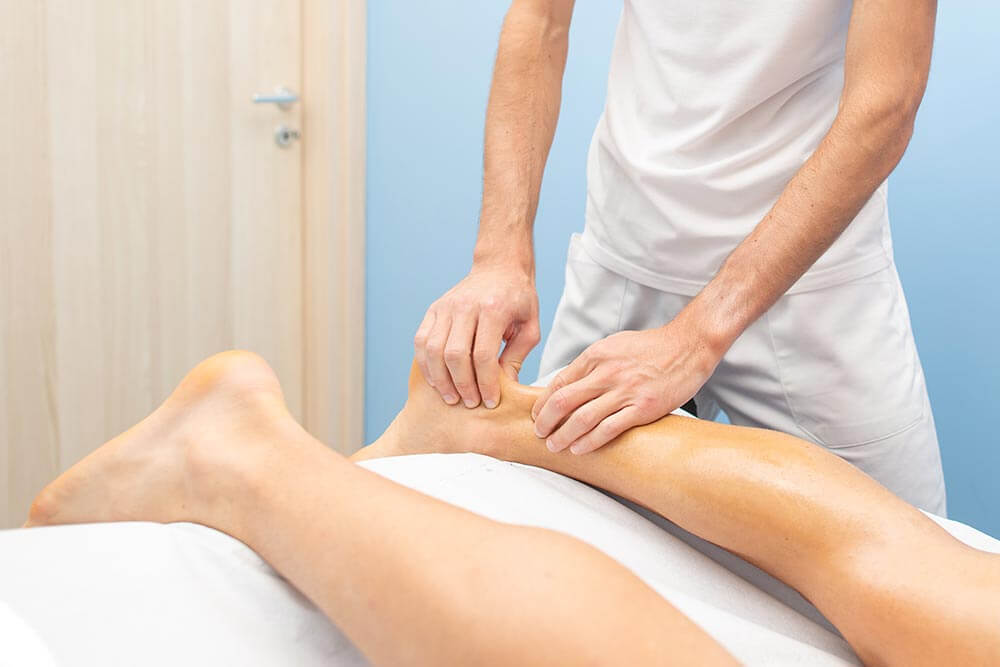Achilles Tendon Rupture: Causes and Treatment

The Achilles tendon rupture is a serious injury, so much so that it even prevents the patient from walking normally. It’s a condition that requires long-term treatment. This means that athletes have to stop their sports activity for a long time.
The tendon
The Achilles tendon is very important because it connects the calf muscles to the heel. Whenever we lift our heels off the ground, it’s thanks to this tendon.
It’s a wide fibrous band, and therefore, it’s very resistant. However, as with any other structure, we can also break it in certain cases.
Causes of the Achilles tendon rupture
What causes a rupture of this tendon is an increase in the force we exert on it. Since the tendon isn’t accustomed to this force, it’s unable to withstand it and ends up breaking.
Therefore, sports are usually the main culprit behind an Achilles tendon rupture:
- A sudden increase in the demand or frequency of practice, especially in sports that involve repeated jumping.
- The continued practice of a sport that requires harmful movements that we’re not prepared for.
- A bad fall or stepping into a hole unexpectedly.
- There are also cases in which a patient severed their tendon due to an accident.
If we suffer a tendon rupture, we may hear a click in the area just above the heel. We’ll probably feel as if we were hit in that area, even though it wasn’t the case. We’ll also notice sharp pain, and it’ll be difficult for us to walk normally.

Prevention
With the possible causes in mind, here are some of the keys to preventing the Achilles tendon from breaking:
- Be prepared: it’s important to properly train the muscles of your lower limbs. More specifically, you should strengthen the calf muscles (hamstrings and soleus). These muscles will give more strength to the tendon and prepare it for greater efforts in the future.
- Varied exercises: in addition to strengthening the muscles, it’s important to stretch them often. It’s also essential to vary your work out routine. This is a great way to reduce the risk of rupture when you have to face unexpected movements, as you’ll have previously exposed your tendon to many different positions and situations in a controlled environment.
- Losing weight: obesity or being overweight are risk factors for a ruptured Achilles tendon since both conditions increase the pressure that the tendon must bear. Therefore, if we can decrease that pressure, the probability of suffering a rupture will decrease as well.
Treatment for an Achilles tendon rupture
In the event that you’ve suffered a total rupture, you’ll most likely require surgery. It’ll be necessary to connect both ends of the tendon again and start the healing process.
On the other hand, if it’s a partial rupture, you may need either surgery or medical treatment. Medical tests will determine the extent of the injury and the best therapeutic path to follow.
If we follow a medical treatment, the doctor will first immobilize the foot with a plaster boot or splint for about six weeks. During this time, the tendon will grow again. Depending on the extent of the injury, we’ll be able to start mobilizing the injured foot sooner or later throughout these six weeks. After this time has passed, we’ll begin the recovery work with physical therapy.
In the case of surgery, the results may be better in the long term, because it reduces the probability of suffering another rupture. It’ll also help us to have a greater impulse and strength once we recover. After the operation, we’ll also have to wear the boot or splint, and then start physical therapy.

Physical therapy after an Achilles tendon rupture
During the physical therapy sessions, we’ll have to work on strengthening and stretching the muscles. We’ll also have to modify the way we walk, using other techniques to alleviate the pain and promote healing in the area.
The total recovery will take between four and six months. Therefore, it’s important to have patience and follow the professional instructions very strictly. We must know how much time we can perform certain exercises; it’s also vital to ask before increasing the pressure on the area.
We’ll have to confirm with the specialist when we’ll be able to walk normally, run, jump, or do any sports activity. It’s essential to follow the temporary guidelines set by the professional in order to avoid relapses.
The Achilles tendon rupture is a serious injury, so much so that it even prevents the patient from walking normally. It’s a condition that requires long-term treatment. This means that athletes have to stop their sports activity for a long time.
The tendon
The Achilles tendon is very important because it connects the calf muscles to the heel. Whenever we lift our heels off the ground, it’s thanks to this tendon.
It’s a wide fibrous band, and therefore, it’s very resistant. However, as with any other structure, we can also break it in certain cases.
Causes of the Achilles tendon rupture
What causes a rupture of this tendon is an increase in the force we exert on it. Since the tendon isn’t accustomed to this force, it’s unable to withstand it and ends up breaking.
Therefore, sports are usually the main culprit behind an Achilles tendon rupture:
- A sudden increase in the demand or frequency of practice, especially in sports that involve repeated jumping.
- The continued practice of a sport that requires harmful movements that we’re not prepared for.
- A bad fall or stepping into a hole unexpectedly.
- There are also cases in which a patient severed their tendon due to an accident.
If we suffer a tendon rupture, we may hear a click in the area just above the heel. We’ll probably feel as if we were hit in that area, even though it wasn’t the case. We’ll also notice sharp pain, and it’ll be difficult for us to walk normally.

Prevention
With the possible causes in mind, here are some of the keys to preventing the Achilles tendon from breaking:
- Be prepared: it’s important to properly train the muscles of your lower limbs. More specifically, you should strengthen the calf muscles (hamstrings and soleus). These muscles will give more strength to the tendon and prepare it for greater efforts in the future.
- Varied exercises: in addition to strengthening the muscles, it’s important to stretch them often. It’s also essential to vary your work out routine. This is a great way to reduce the risk of rupture when you have to face unexpected movements, as you’ll have previously exposed your tendon to many different positions and situations in a controlled environment.
- Losing weight: obesity or being overweight are risk factors for a ruptured Achilles tendon since both conditions increase the pressure that the tendon must bear. Therefore, if we can decrease that pressure, the probability of suffering a rupture will decrease as well.
Treatment for an Achilles tendon rupture
In the event that you’ve suffered a total rupture, you’ll most likely require surgery. It’ll be necessary to connect both ends of the tendon again and start the healing process.
On the other hand, if it’s a partial rupture, you may need either surgery or medical treatment. Medical tests will determine the extent of the injury and the best therapeutic path to follow.
If we follow a medical treatment, the doctor will first immobilize the foot with a plaster boot or splint for about six weeks. During this time, the tendon will grow again. Depending on the extent of the injury, we’ll be able to start mobilizing the injured foot sooner or later throughout these six weeks. After this time has passed, we’ll begin the recovery work with physical therapy.
In the case of surgery, the results may be better in the long term, because it reduces the probability of suffering another rupture. It’ll also help us to have a greater impulse and strength once we recover. After the operation, we’ll also have to wear the boot or splint, and then start physical therapy.

Physical therapy after an Achilles tendon rupture
During the physical therapy sessions, we’ll have to work on strengthening and stretching the muscles. We’ll also have to modify the way we walk, using other techniques to alleviate the pain and promote healing in the area.
The total recovery will take between four and six months. Therefore, it’s important to have patience and follow the professional instructions very strictly. We must know how much time we can perform certain exercises; it’s also vital to ask before increasing the pressure on the area.
We’ll have to confirm with the specialist when we’ll be able to walk normally, run, jump, or do any sports activity. It’s essential to follow the temporary guidelines set by the professional in order to avoid relapses.
All cited sources were thoroughly reviewed by our team to ensure their quality, reliability, currency, and validity. The bibliography of this article was considered reliable and of academic or scientific accuracy.
- Sanz Pozo B, Moreno García A, Rubio Toledano L. Rotura del tendón de Aquiles: a propósito de un esguince de mala evolución. Medifam. 2001 Jul; 11( 7 ): 55-60.
- Delgado B, Cristiani D, Aspe M. Ruptura del tendón de Aquiles: Incidencia y experiencia en su manejo. Acta Ortop Mex 2003; 17 (5).
- Arzac Ulla, I, De Silvestri A, Fiorentini, G. Roturas agudas del tendón de Aquiles tratadas con técnica minimamente invasiva de Dresden. [Acute Achilles tendon ruptures treated with minimally invasive Dresden technique.]. Revista De La Asociación Argentina De Ortopedia Y Traumatología, 2017; 82(1), 48-53.
This text is provided for informational purposes only and does not replace consultation with a professional. If in doubt, consult your specialist.








